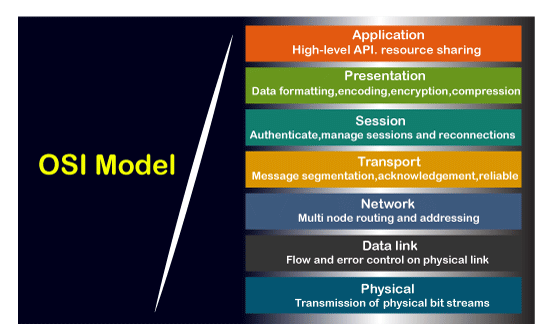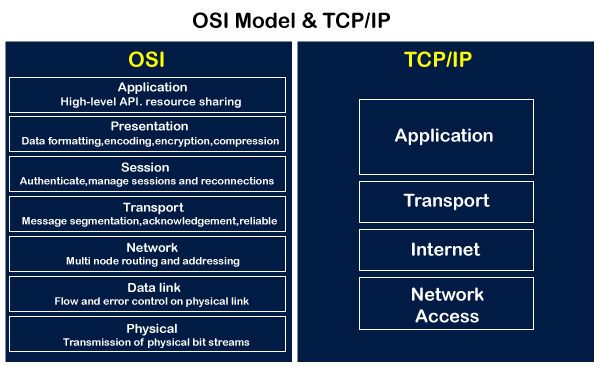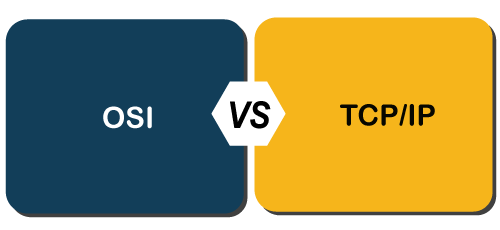OSI vs TCP/IPWhat is OSI model?The OSI stands for Open System Interconnection, which was developed in 1980s. It is a conceptual model used for network communication. It is not implemented entirely, but it is still referenced today. This OSI model consists of seven layers, and each layer is connected to each other. The data moves down the OSI model, and each layer adds additional information. The data moves down until it reaches the last layer of the OSI model. When the data is received at the last layer of the OSI model, then the data is transmitted over the network. Once the data is reached on the other side, then the process will get reversed. 
What is TCP/IP model?The TCP model stands for Transmission Control Protocol, whereas IP stands for Internet Protocol. A number of protocols that make the internet possibly comes under the TCP/IP model. Nowadays, we do not hear the name of the TCP/IP model much, we generally hear the name of the IPv4 or IPv6, but it is still valid. This model consists of 4 layers. Now, we will look at the diagrammatic representation of the TCP/IP model. 
As shown in the above diagram, the TCP/IP model has 4 layers, while the OSI model consists of 7 layers. Diagrammatically, it looks that the 4 layers of the TCP/IP model exactly fit the 7 layers of the OSI model, but this is not reality. The application layer of the TCP/IP model maps to the first three layers, i.e., application, session, and presentation layer of the OSI model. The transport layer of the TCP maps directly to the transport layer of the OSI model. The internet layer of the TCP/IP model maps directly to the network layer of the OSI model. The last two layers of the OSI model map to the network layer of the TCP/IP model. TCP/IP is the most widely used model as compared to the OSI model for providing communication between computers over the internet. Similarities between the OSI and TCP/IP modelThe following are the similarities between the OSI and TCP/IP model:
Both the models are the logical models and having similar architectures as both the models are constructed with the layers.
Both the layers have defined standards, and they also provide the framework used for implementing the standards and devices.
Both models have simplified the troubleshooting process by breaking the complex function into simpler components.
The standards and protocols which are already pre-defined; these models do not redefine them; they just reference or use them. For example, the Ethernet standards were already defined by the IEEE before the development of these models; instead of recreating them, models have used these pre-defined standards.
The function which is performed between the 'presentation' and the 'network' layer is similar to the function performed at the transport layer. Differences between the OSI and TCP/IP model
Let's see the differences between the OSI and TCP/IP model in a tabular form:
Next TopicComputer Network Tutorial
|
 For Videos Join Our Youtube Channel: Join Now
For Videos Join Our Youtube Channel: Join Now
Feedback
- Send your Feedback to [email protected]
Help Others, Please Share










